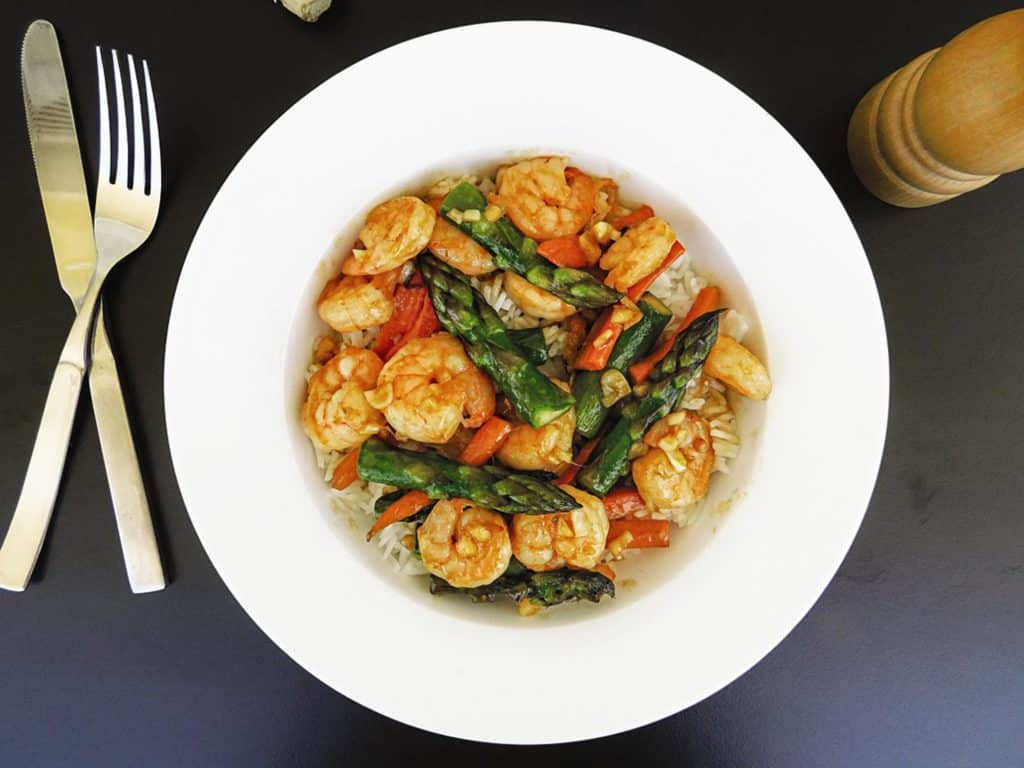
Remember when not a single grocery store in America sold pomegranate juice? When tofu was hard to find? When quinoa was almost unheard of?
Well, let me introduce you to sea asparagus.
My family and I were in Victoria, British Columbia, Canada, on Del Viento, our Fuji 40, headed for Alaska. It was the beginning of what would be an eight-year Pacific cruise. A few nights before we left, cruising friends gave us a briefing. It included pictures, stories and need-to-know information from their multiple trips north.
Then they told us about this thing called sea asparagus. They said we’d find it just at the high-tide line. They said to pick only the tender ends, and to pick around the edges of beds to avoid stomping on the plants. They said we could eat it raw or saute it. We could even blanch it, cut it into pieces, and freeze it. They said it was salty, delicious and nutritious.
My wife, Windy, and I tucked the info in the back of our minds as we bid Victoria a warm farewell. Then, a week later, anchored off Galiano Island in a little cove near Montague Harbour, we sat quietly in the cockpit and heard a clear, authoritative voice booming from ashore. A local naturalist was lecturing a group of schoolchildren, likely ferried over from Vancouver. We tuned in, figuring maybe we’d learn something.
“And here,” the guide said, “just above the high-tide line, is sea asparagus. Pick off a bit and try it.”
Ten minutes later, Windy, our two daughters and I were ashore, poking around the area where the group had been. “I think this is it,” Windy said, nibbling on a tender green shoot. “Funny, I always thought this plant was called pickleweed.”
Sea asparagus has long, green spears that closely resemble garden asparagus. Both are slightly bitter yet savory—but the taste is different. Sea asparagus is briny and a bit crunchy, delicious on its own or paired with something that would normally need salt. It’s perfect with just about any seafood.
We harvested a bunch and rowed back to Del Viento to make our dinner: a sea asparagus-inspired Asian stir-fry. It was very good. As it turned out, sea asparagus is a perfect stir-fry ingredient.
Stir-fries are one of our favorite onboard meals. You can experiment, use what’s on hand, and discover new flavor combos. You can go all-veggie, use tofu, or add slices of beef, chicken or shrimp.
Sea asparagus is high in protein, rich in polyunsaturates, and high in vitamins A and B and folic acid. It’s hyperphotosynthetic (meaning it sucks carbon dioxide out of the air really fast compared with other plants). It’s being used in Baja, California, to make a lower-sodium salt substitute. And it can be used to produce biodiesel. This stuff definitely qualifies as “green.”
In England, they call sea asparagus samphire and eat it with butter or olive oil. In other parts of the world, they call it umari keerai and grow it for livestock feed. The Sri Lankans feed it to donkeys. Other names abound by region, including beach asparagus, glasswort, sea beans and crow’s foot greens. And Windy was right: Pickleweed is a San Francisco name for this stuff. Botanists call it Salicornia, its official name.
It’s probably only a matter of time before clever entrepreneurs add sea asparagus to lists of superfoods you should eat every day. Then, in the grocery store, it’ll be packaged in neat little bundles wrapped in cellophane (and priced exorbitantly).
For now, look for it seasonally in sheltered coastal salt marshes and calm tidal flats. It’s common along the east and west coasts of North America, coastal Gulf of Mexico, and elsewhere around the world. If you’re lucky, you might find it in coastal farmers markets.
We’ll continue gathering it wherever we find it, and munching away for free, wherever our bow points us next.

Savory Sailor’s Stir-Fry
- Splash of olive oil or peanut oil
- 1-2 Tbsp. sesame oil
- 1 cup carrot, thinly sliced
- 1 lb. shrimp, cleaned and deveined; or 14-16 oz. extra-firm tofu, well- drained and cut into bite-size pieces
- 2-3 cloves garlic, finely chopped
- 2 tsp. fresh ginger, finely chopped
- 2-3 cups sea asparagus or garden asparagus
- hoisin, mushroom or oyster sauce, to taste
- black pepper, to taste
- serves 4
Wash and cut sea asparagus spears into 3-inch pieces. If using garden asparagus, remove the tough bottom end of stalks. If you can’t find thin-stalk asparagus, cut thick spears in half lengthwise.
Heat the oil on medium-high in a large skillet or wok. Add the carrot, and toss for 1 minute to coat and heat. If using garden asparagus, add it with the carrot.
Add shrimp and stir-fry for another 3 minutes. If using tofu, stir-fry for 4 minutes.
Add garlic and ginger, and fry for another minute, tossing well. Do not to burn or overcook the garlic. If using sea asparagus, add it now, and continue stir-frying until it’s mixed in and heated through.
With less than a minute left to cook, stir in the sauce of your choice. Add black pepper, to taste.
Alterations: If you want a bit of sour with the sweet, add a dash of rice wine vinegar. For garden asparagus, add salt, to taste, or put a bottle of soy sauce on the table. Do not add salt if using sea asparagus. It’s very salty.
Serve in bowls over rice.
Prep time: 15 minutes
Difficulty: Easy
Can be made: Underway or at anchor








